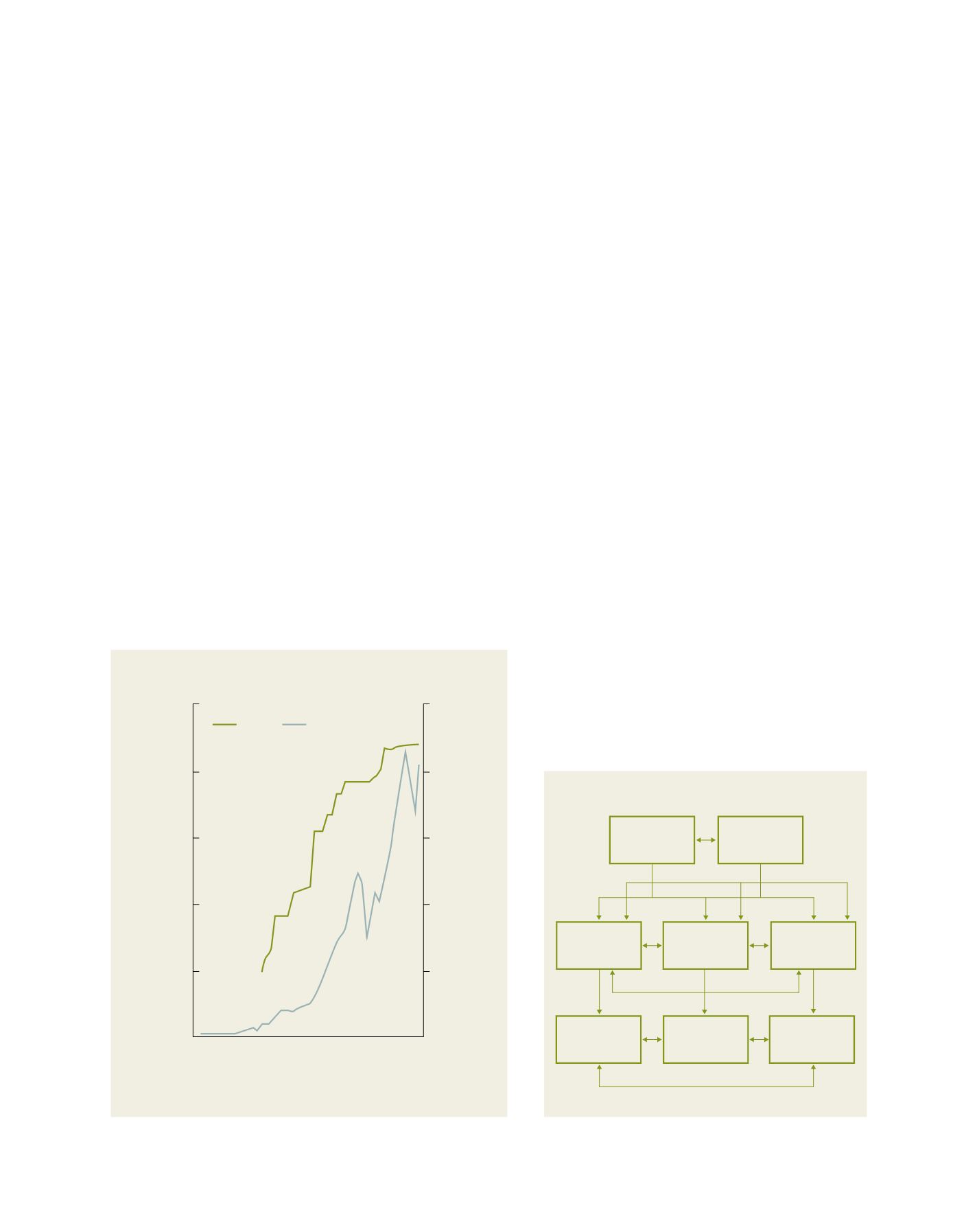

[
] 268
E
conomic
D
evelopment
and
W
ater
degradation. However, following the phenol accident in
1991 and the environmental awareness it raised, water
policy began to seriously consider water quality in addi-
tion to quantity. Following this trend of environmental
awareness, water policy since 2000 has been directed to
eco-friendly and sustainable water management. This has
involved building medium-sized and small dams rather
than large ones, water demand management, and restoring
rivers. Korea, through its Ministry of Land, Transport and
Maritime Affairs (now the Ministry of Land, Infrastructure
and Transport) and K-water, has managed to reduce flood
damage by a factor of 10 through the Four Major Rivers
Restoration Project.
11
Moreover, Korea has secured a
six times larger water supply compared to 1965.
12
This
securing of water supply has important implications
for economic growth, as water is an essential resource
in economic activity. The amount of water that can be
stored serves as an upper limit to industrial output, which
directly contributes to national income.
These policies have occurred within the institutional
framework for water resources management provided by
various plans.
13
The National Territorial Plan and the
National Environmental Plan, which were directed by the
Five-Year Economic and Social Development Plan, are
those under which more specific water plans have been
drafted. The National Water Resources Plan, the National
Water Supply Plan and the National Sewerage Plan fall
under these two plans. The Long-term Plan for Dam
Construction falls under the National Water Resources
Plan, the Maintenance Plan for Water Supply under the
National Water Supply Plan, and the Maintenance Plan
for Sewerage under the National Sewerage Plan. Thus,
the institutional framework for water resources manage-
ment in Korea consists of three areas.
Working within this framework are a number of
bodies that implement the management of water
While the Government had commandeered the economy in the
previous decades, with the growth of the economy and the develop-
ment of the private sector, the Government took on a lesser role,
ushering in liberalization in the 1980s. Along with liberalization, the
main economic policy was maintaining price stability. Through these
policies, the Korean economy continued to enjoy high growth, achiev-
ing a low of 6.8 per cent in 1989 and a high of 12.3 per cent in 1987.
9
The latter years of the 1980s saw a change in policy from price
stability to preference for growth – a change that served as the policy
context of the following decade. Within this policy environment,
regulations were lifted for Korea’s large corporations, which took on
a large volume of loans in their aggressive expansion attempts in the
context of globalization. This economic modus operandi was rudely
interrupted by the Asian financial crisis of 1997, as a result of which
Korea submitted to loans from the International Monetary Fund and
their associated conditionalities. Following the crisis and from the
2000s on, Korea has continued to grow to its currently respected
status, though not at the same growth rates it achieved in the past.
An integral part of Korea’s development was the development of
its water resources. Water resources development has a number of
objectives which may be prioritized according to a country’s immedi-
ate needs. In Korea’s case, building basic water infrastructure was the
primary objective early on from the mid-1960s through to the 1980s. In
1973, the Soyanggang Dam was constructed and in 1977, the Andong
Dam. These and other multipurpose dams secured water, generated
hydropower and reduced damage from floods. Securing water was an
important goal, as demonstrated by the tripling of total water consump-
tion from 5 billion cubic metres in 1965 to 15 billion cubic metres in
1980.
10
The 1980s was a period of unbalanced growth and water quality
The long-term
plan for
dam construction
The maintenance
plan for
water supply
The maintenance
plan for
sewerage
The national
water resources
plan
The national
water supply plan
The national
sewerage plan
The national
territorial
plan
The national
environmental
plan
Korea’s institutional framework for water administration
Source: Min,
The Role of the State and the Market
, p268, figure 36
0
5,000
10,000
15,000
20,000
25,000
0
2,000
4,000
6,000
8,000
10,000
GNI (US$)
Water storage (106m
3
)
1970
1960
1980 1990 2000 2010
Year
GNI
Water source
Water storage and gross national income in Korea
Source: K-water
The amount of water stored serves as an upper limit to industrial output


















